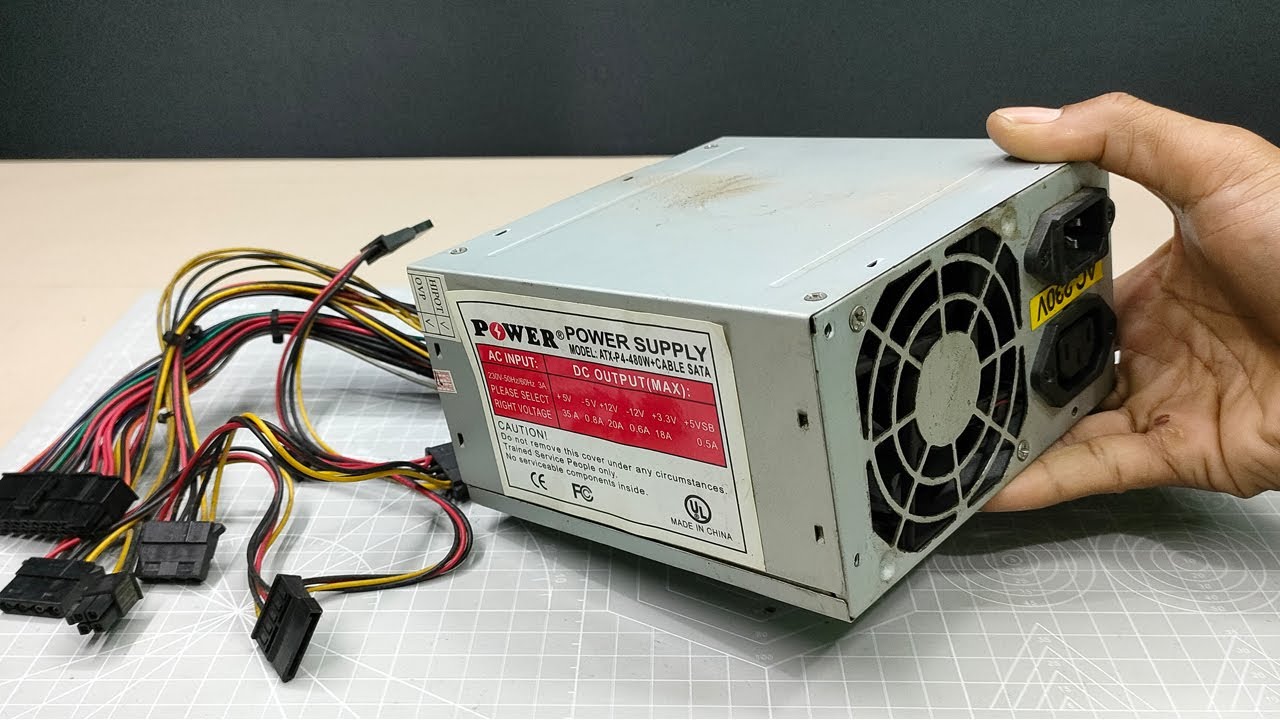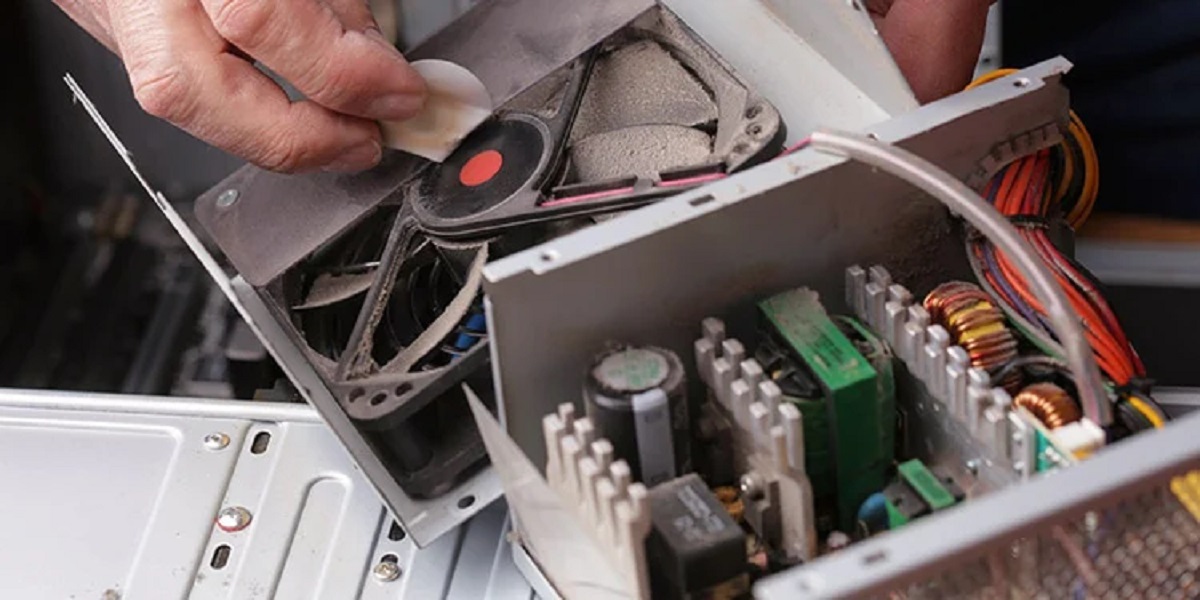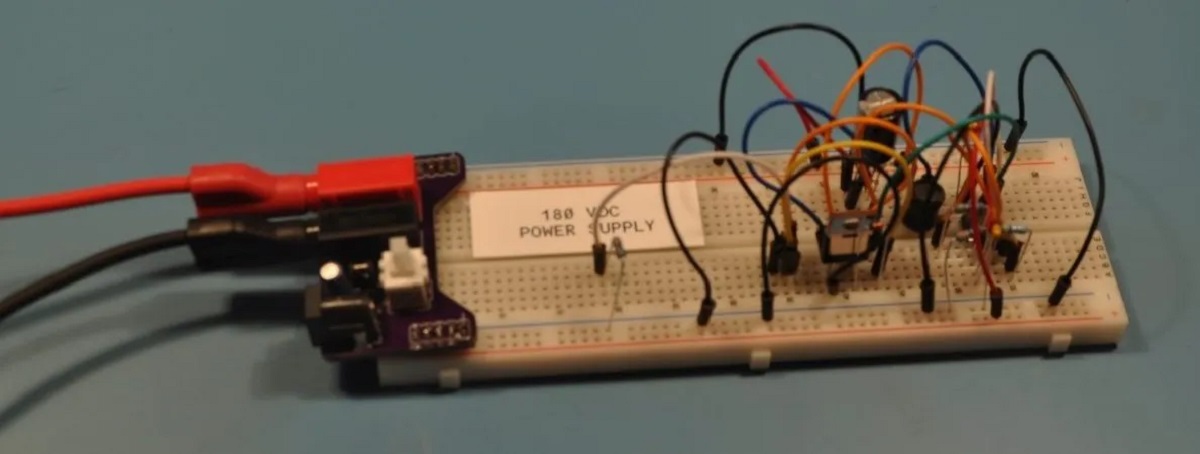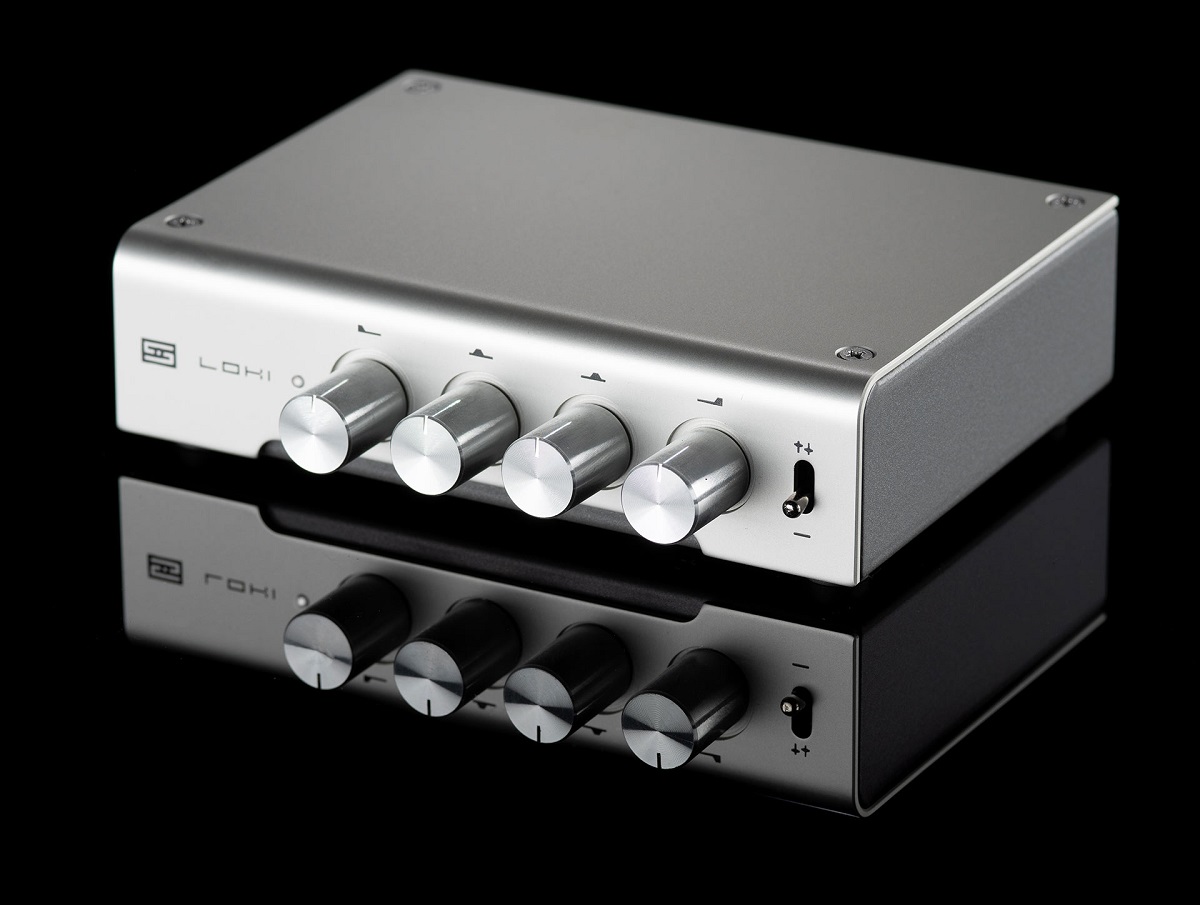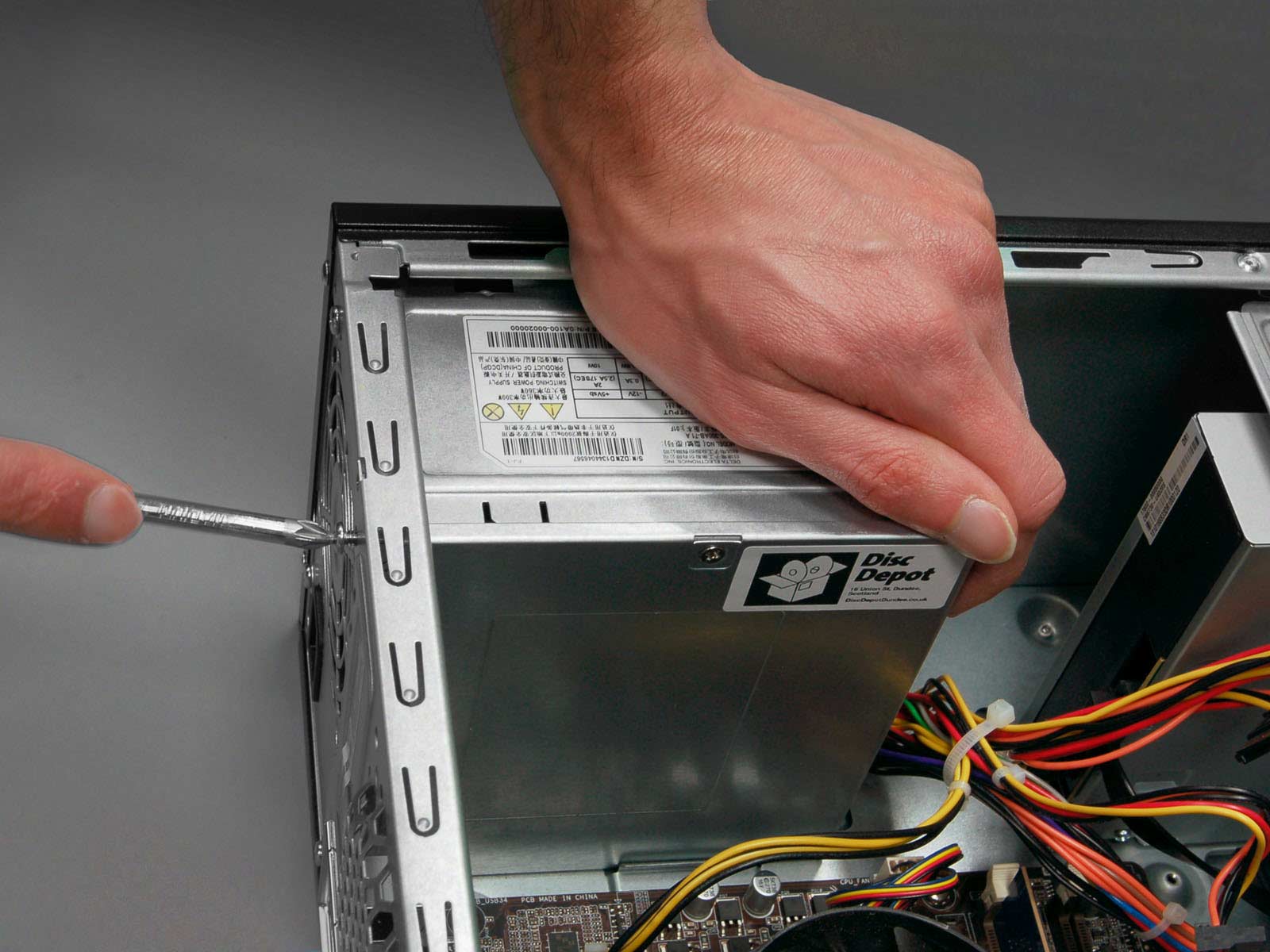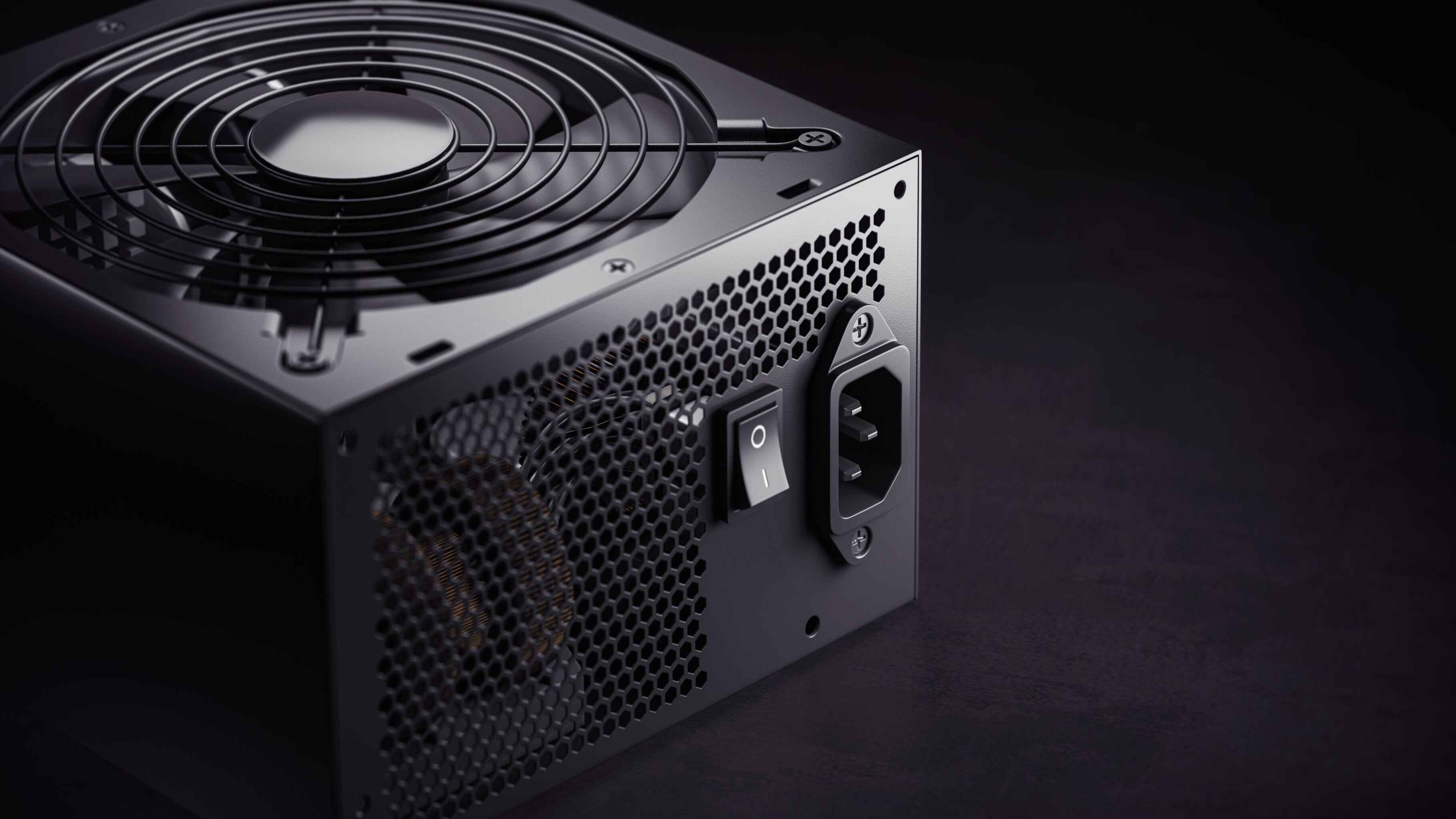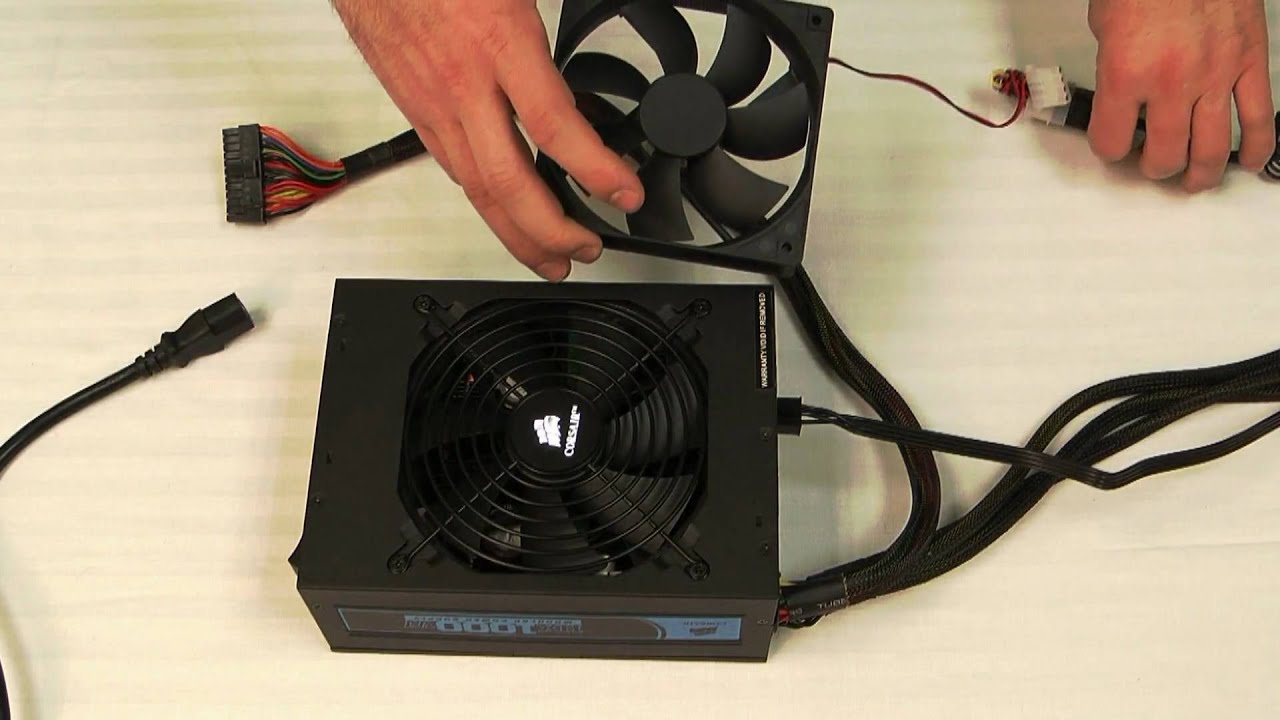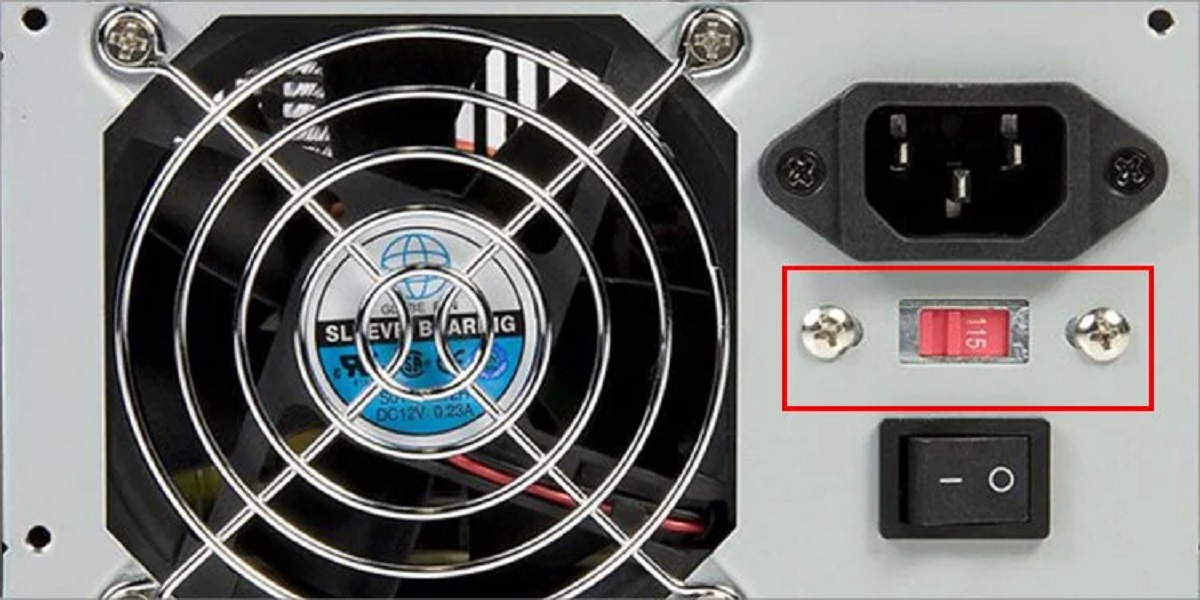Introduction:
The power supply unit (PSU) is an essential component of any electronic device that requires electrical power to function. It is responsible for converting the alternating current (AC) from a power outlet into direct current (DC) that is used by the internal components of the device. Without a properly functioning PSU, the electronic device would not receive the necessary power to operate.
While the PSU may seem like a mundane part of a device, its role is crucial in providing stable and clean power to all the components. It ensures that the voltage and current levels remain within the acceptable ranges, protecting the device from potential damage caused by power fluctuations or surges.
Understanding the basics of how a power supply unit works and its various components is essential for anyone dealing with electronics or even just using electronic devices on a daily basis. In this article, we will explore the function and importance of the power supply unit in depth, discussing its key components, conversion processes, safety features, and how to choose the right PSU for your specific needs.
So, whether you are a novice electronics enthusiast or a seasoned tech professional, let’s dive into the world of power supply units and gain a better understanding of their function and significance.
Power Supply Unit (PSU) Basics:
Before we delve deeper into the intricacies of a power supply unit (PSU), let’s start with the basics. The primary function of a PSU is to convert the incoming alternating current (AC) from a power outlet into the direct current (DC) that is required by the electronic device. This conversion is necessary because most electronic components operate on DC power.
The PSU is responsible for providing a consistent and regulated supply of power to all the components in the device. It ensures that the voltage and current remain stable, preventing any fluctuations that could potentially damage the electronic components.
To achieve this, the PSU consists of various components that work together to regulate the power output. These components include transformers, rectifiers, capacitors, voltage regulators, and safety features.
The transformer in the PSU is responsible for stepping down the high-voltage AC power from the power outlet to a lower voltage level that the device can handle. It is crucial in ensuring the safety of the electronic components by reducing the risk of overvoltage.
After the transformer, the rectifiers come into play. They convert the AC voltage into a pulsating DC voltage. However, this pulsating DC voltage still needs to be smoothed out to obtain a stable and continuous power supply, which is where the capacitors come in. They store electrical energy and release it when necessary, smoothing out the ripples and providing a consistent DC voltage.
Additionally, voltage regulators in the PSU help maintain a steady voltage output, even when there are fluctuations or variations in the input voltage. This ensures that the electronic components receive a constant and reliable power supply, preventing any damage due to overvoltage or undervoltage conditions.
Finally, the PSU incorporates various safety features to protect both the device and the user. These features include overcurrent protection (OCP), overvoltage protection (OVP), short-circuit protection, and thermal protection. They help safeguard the device from potential power-related issues and ensure the overall safety of the user.
Now that we have established the basics of a power supply unit, let’s move on to the specific components and their functions in the next section.
Components of a Power Supply Unit:
A power supply unit (PSU) consists of several key components that work together to provide a regulated and stable power output for electronic devices. Understanding these components is crucial for anyone looking to understand the inner workings of a PSU.
1. Transformer: The transformer is responsible for stepping down the incoming high-voltage alternating current (AC) from the power outlet to a lower voltage level that the device can handle. It ensures the safety of the electronic components by reducing the risk of overvoltage.
2. Rectifiers: The rectifiers convert the AC voltage into direct current (DC) voltage. They allow the flow of current in only one direction, resulting in a pulsating DC voltage.
3. Capacitors: Capacitors play a vital role in smoothing out the pulsating DC voltage obtained from the rectifiers. They store electrical energy and release it when necessary, providing a continuous and stable DC voltage output.
4. Voltage Regulators: Voltage regulators ensure a constant and steady output voltage, regardless of fluctuations or variations in the input voltage. They help protect the electronic components from potential damage due to overvoltage or undervoltage conditions.
5. Safety Features: Power supply units incorporate various safety features to protect both the device and the user. These features include overcurrent protection (OCP), overvoltage protection (OVP), short-circuit protection, and thermal protection. They prevent damage caused by excessive current, voltage spikes, electrical shorts, and overheating.
6. Cooling System: Many modern PSUs include a cooling system, such as fans or heatsinks, to dissipate heat generated during operation. This helps maintain the temperature within safe limits and ensures proper functioning of the PSU.
7. Connectors: Power supply units are equipped with different connectors to deliver power to various components of the device, such as the motherboard, hard drives, graphics cards, and peripherals. Common connectors include the ATX power connector, SATA power connector, and PCIe power connectors.
By understanding the function and significance of each component, you can better appreciate the complexity involved in delivering stable and reliable power to electronic devices. In the next section, we will explore the AC to DC conversion process in more detail.
AC to DC Conversion:
One of the primary functions of a power supply unit (PSU) is to convert the incoming alternating current (AC) from a power outlet into the direct current (DC) that is required by electronic devices. This process, known as AC to DC conversion, is essential because most electronic components operate on DC power.
The AC to DC conversion in a PSU is achieved through a combination of transformer and rectifier circuits. Let’s take a closer look at each stage of the conversion process:
1. Transformer: The first step in AC to DC conversion is the transformer stage. The transformer in the PSU steps down the high-voltage AC power from the power outlet to a lower voltage level that the device can handle. This step is crucial for the safety of the electronic components, as it reduces the risk of overvoltage. The transformer consists of primary and secondary coils, which are wound around a core made of ferromagnetic material. By varying the number of turns in each coil, the transformer can step down or step up the input voltage to the desired level.
2. Rectifiers: After the transformer stage, the AC voltage is passed through rectifier circuits to convert it into DC voltage. Rectifiers are electronic devices that allow the flow of current in only one direction. The most common types of rectifiers used in PSU designs are diodes. Diodes act as one-way valves for electric current, ensuring that only the positive half of the AC voltage waveform passes through. As a result, the output of the rectifiers is a pulsating DC voltage.
3. Capacitors: To obtain stable and continuous DC voltage, the pulsating output from the rectifiers is passed through capacitors. Capacitors store electrical energy and release it when necessary. They smooth out the ripples in the DC voltage, resulting in a more constant and regulated output. The capacitors in the PSU help mitigate the pulsating nature of the rectified DC voltage, providing a cleaner power supply to the electronic components.
By going through the AC to DC conversion process, the power supply unit ensures that the electronic device receives the necessary DC power for its proper functioning. The regulated DC output from the PSU delivers a constant voltage level, protecting the internal components from potential damage caused by power fluctuations or surges.
Now that we have explored the AC to DC conversion process, let’s move on to the next section, where we will discuss voltage regulation in a PSU.
Voltage Regulation:
Voltage regulation is a crucial aspect of a power supply unit (PSU) that ensures a steady and regulated output voltage to power electronic devices. It plays a vital role in protecting the components from potential damage caused by overvoltage or undervoltage conditions.
The primary function of voltage regulation is to maintain a constant voltage output, regardless of fluctuations or variations in the input voltage. This is especially important as the power demand of electronic devices can vary depending on their operation and load requirements.
PSUs achieve voltage regulation using various techniques, such as feedback control and voltage regulation circuits:
1. Feedback Control: This technique involves constantly monitoring the output voltage and comparing it to a reference voltage. If the output voltage deviates from the desired level, a feedback circuit adjusts the control signal to correct the voltage and bring it back to the set point. The feedback control mechanism ensures that the PSU continuously adapts to changing load conditions and other external factors that may affect the output voltage.
2. Voltage Regulation Circuits: Voltage regulation circuits are built-in circuits within the PSU that help maintain a stable and regulated output voltage. These circuits can be linear regulators or switching regulators.
– Linear Regulators: Linear regulators use a voltage reference and a series pass transistor to regulate the output voltage. They work by continuously adjusting the transistor’s resistance to maintain a constant output voltage, regardless of the input voltage or load changes. Linear regulators are relatively simple and provide good voltage regulation but are less efficient compared to switching regulators.
– Switching Regulators: Switching regulators use a different approach to voltage regulation. They rapidly switch the input voltage on and off to regulate the output voltage. This switching operation allows for higher efficiency as the transistor operates in either a fully on or fully off state, minimizing power losses. Switching regulators are commonly used in modern PSUs due to their high efficiency and compact size.
Together, these voltage regulation techniques ensure that the PSU delivers a stable and consistent output voltage, protecting the electronic components from potential damage due to voltage fluctuations. By maintaining a steady voltage, the PSU enables smooth and reliable operation of the device.
In the next section, we will explore the power protection and safety features that are incorporated into a power supply unit.
Power Protection and Safety Features:
Power supply units (PSUs) incorporate various power protection and safety features to ensure the safe and reliable operation of electronic devices. These features are designed to protect both the device and the user from potential power-related issues and hazards.
Here are some commonly found power protection and safety features in PSUs:
1. Overcurrent Protection (OCP): OCP safeguards the electronic components by preventing excessive current flow. If the current exceeds a predefined threshold, OCP activates and shuts down the PSU, protecting the device from potential damage or overheating caused by a short circuit or high-power consumption.
2. Overvoltage Protection (OVP): OVP protects the electronic components from voltage spikes or excessive voltages. When the output voltage exceeds a safe threshold, OVP kicks in and shuts down the PSU, preventing any damage that could occur due to overvoltage conditions.
3. Short-Circuit Protection: Short-circuit protection is crucial in cases where a fault or accidental short circuit occurs in the device. It immediately shuts down the PSU to prevent any electrical damage or fire hazards that could result from the excessive current flow.
4. Thermal Protection: Thermal protection is designed to monitor the temperature of the PSU. If the temperature rises above a safe operating level, the thermal protection feature activates and shuts down the PSU to prevent overheating. This protects the PSU and the electronic components from potentially damaging temperatures.
5. Surge Protection: Surge protection guards against sudden voltage spikes or surges from the power source. It diverts or suppresses the excess voltage, preventing the spike from reaching the connected device. Surge protection is essential for protecting sensitive electronics from potential damage caused by power surges, such as those from lightning strikes or power grid fluctuations.
6. Electromagnetic Interference (EMI) Filtering: EMI filtering reduces the electromagnetic interference caused by the PSU. It filters out any unwanted noise or electrical disturbances from the power supply, ensuring clean power delivery to the electronic components. EMI filtering helps maintain the optimal performance of the device and prevents any interference with other nearby electronic devices.
These power protection and safety features work together to safeguard the electronic device and ensure the safety of the user. They provide a reliable and secure power supply, minimizing the risk of electrical damage, component failure, and potential hazards.
Now that we have explored the power protection and safety features in a PSU, let’s move on to the next section, where we will discuss the efficiency rating of power supply units.
Efficiency Rating:
The efficiency rating of a power supply unit (PSU) is a measure of how effectively it converts the incoming electrical power into the power usable by the electronic device. A higher efficiency rating indicates that more of the input power is converted into usable output power, resulting in less energy wasted as heat.
The efficiency of a PSU is influenced by various factors, such as the design, components used, and manufacturing quality. The most efficient PSUs employ advanced technologies and high-quality components to minimize power losses.
PSU efficiency is typically expressed as a percentage and is divided into different efficiency levels:
1. 80 PLUS Certification: The 80 PLUS certification program is widely used to measure PSU efficiency. PSUs that meet the requirements of this certification are classified into different ratings, including 80 PLUS, 80 PLUS Bronze, 80 PLUS Silver, 80 PLUS Gold, 80 PLUS Platinum, and 80 PLUS Titanium. Each rating represents a higher level of efficiency, with Titanium being the most efficient.
2. Standby Power Efficiency: Standby power, also known as vampire power or phantom power, refers to the power consumed by a device when it is in standby or off mode. Many PSUs now include a standby power mode that reduces power consumption during idle periods. The Standby Power Efficiency rating indicates how efficient the PSU is in reducing standby power consumption.
A higher efficiency rating is desirable as it indicates less wasted energy, reduced heat generation, and lower electricity bills. It also contributes to a greener environment by reducing overall power consumption.
However, it is important to note that the efficiency rating is only one aspect to consider when choosing a PSU. Other factors such as reliability, stability, and power output capacity should also be taken into account.
When selecting a PSU, it is recommended to choose one with an efficiency level that meets your power requirements and budget. Assessing the efficiency rating alongside other specifications will help ensure you select a PSU that provides optimal performance and energy efficiency for your electronic device.
In the next section, we will explore different PSU form factors that accommodate various computer systems.
PSU Form Factors:
Power supply units (PSUs) come in various form factors, which determine the physical dimensions, shape, and compatibility with different computer systems. A PSU’s form factor is crucial in ensuring proper installation and compatibility with the computer case and its internal components.
Here are some common PSU form factors:
1. ATX (Advanced Technology eXtended): ATX is the most widely used form factor for desktop computer PSUs. ATX PSUs come in different sizes, such as ATX12V, which is commonly used for standard desktop systems, and EPS12V, which is designed for servers and high-performance workstations. ATX PSUs have a rectangular shape with screw mountings for easy installation in ATX-compatible computer cases.
2. SFX (Small Form Factor eXtended): SFX PSUs are designed for small form factor computer cases, such as Mini-ITX or Micro-ATX cases. SFX PSUs are smaller in size compared to ATX PSUs, allowing for compact builds without sacrificing power delivery and efficiency.
3. TFX (Thin Form Factor eXtended): TFX PSUs are slim and compact, designed specifically for low-profile and smaller form factor computer cases. They are commonly used in slim desktops or Small Form Factor (SFF) systems where space is limited.
4. Flex ATX: Flex ATX PSUs are even smaller in size than TFX PSUs and are primarily used in Mini-ITX or embedded systems. They are designed for space-constrained builds where flexibility and compactness are essential.
5. Custom Form Factors: Some manufacturers, particularly for specialized systems or proprietary builds, create custom form factor PSUs. These PSUs are specifically designed to fit in specific computer cases or equipment and may not be compatible with standard ATX or other form factor specifications.
It is crucial to ensure compatibility between the PSU form factor and the computer case before purchasing a PSU. This ensures a proper fit and prevents any installation issues that may arise.
Additionally, it is important to consider the power requirements of the computer system when choosing a PSU. The wattage and power output capacity of the PSU should be sufficient to meet the demands of the components, ensuring stable and reliable power delivery.
Understanding PSU form factors allows you to choose the right PSU that fits your computer case and meets the power requirements of your system. In the next section, we will discuss factors to consider when choosing the right power supply unit.
Choosing the Right Power Supply Unit:
Choosing the right power supply unit (PSU) is essential for ensuring optimal performance and reliability of your electronic device. Here are some factors to consider when selecting a PSU:
1. Power Requirements: Determine the power requirements of your device by assessing the power consumption of individual components, such as the CPU, graphics card, and hard drives. Add up their power ratings to get an estimate of the total power needed. Choosing a PSU with a wattage slightly higher than the estimated power requirement ensures that it can handle the load and allows for future upgrades.
2. Efficiency Rating: Consider the efficiency rating of the PSU. A higher efficiency PSU translates to less wasted energy and lower operating costs. Look for PSUs with 80 PLUS certification, with higher levels such as Platinum or Titanium offering greater efficiency.
3. Connectors and Cables: Check the PSU’s connectors and cables to ensure they are compatible with your device’s components. Look for sufficient SATA power connectors for hard drives and SSDs, PCIe connectors for graphics cards, and the necessary ATX power connectors for the motherboard.
4. Form Factor: Ensure that the PSU’s form factor is compatible with your computer case. Consider the size and dimensions of the PSU to ensure it fits properly and doesn’t obstruct other components or airflow within the case.
5. Quality and Brand: Opt for reputable PSU brands known for their reliability and quality. Trusted brands often use high-quality components and adhere to stringent manufacturing standards, reducing the risk of failures or malfunctions. Reading reviews and checking user experiences can help in identifying reliable brands.
6. Cooling and Noise: Consider the cooling system of the PSU, especially if you have a high-performance system or plan on overclocking. Look for PSUs with efficient cooling mechanisms, such as silent fans or advanced heat dissipation systems, to maintain stable temperatures and reduce noise levels.
7. Warranty and Support: Check the warranty period offered by the manufacturer. A longer warranty period indicates manufacturer confidence in the product’s reliability. Additionally, ensure that customer support is readily available in case you encounter any issues or have questions regarding the PSU.
Taking these factors into account will help you choose a PSU that meets your device’s power requirements, ensures stability, and provides overall reliability and efficiency. Remember to evaluate the specific needs of your device and consider any potential future upgrades to select a PSU that can support future expansion.
Now that you are equipped with the knowledge to choose the right power supply unit, let’s conclude our exploration of the role and importance of PSUs.
Conclusion:
The power supply unit (PSU) is a fundamental component in electronic devices, responsible for converting the incoming alternating current (AC) from a power outlet into the direct current (DC) that is used by the internal components. It ensures a stable and regulated power supply, protecting the device from potential damage caused by power fluctuations or surges.
Throughout this article, we have explored the function and importance of the power supply unit. We learned about the basics of a PSU, including its role in AC to DC conversion, voltage regulation, and the components involved in providing clean and reliable power.
We also discussed the significance of power protection and safety features in a PSU, such as overcurrent protection, overvoltage protection, and short-circuit protection, which work together to safeguard devices and users from potential hazards.
The concept of efficiency rating was also explored, highlighting the importance of selecting a PSU with a higher efficiency level to minimize energy wastage and reduce operating costs.
Additionally, we covered different PSU form factors and the factors to consider when choosing the right PSU for your device, including power requirements, connectors and cables, form factor compatibility, quality and brand reputation, cooling and noise levels, and warranty and support.
By understanding the functions and considerations of power supply units, you are better equipped to make an informed decision when selecting a PSU for your electronic device.
Remember, a well-chosen PSU not only ensures stable and reliable power delivery but also contributes to the overall efficiency, longevity, and safety of your electronic device.
So, whether you are building a new computer, upgrading your existing system, or replacing a faulty PSU, take the time to research and choose a PSU that meets your device’s requirements and offers the features and quality necessary for optimal performance.
Now that you have a comprehensive understanding of the power supply unit, its function, components, and considerations, you can confidently select the right PSU for your needs and enjoy the reliable and efficient operation of your electronic device.







